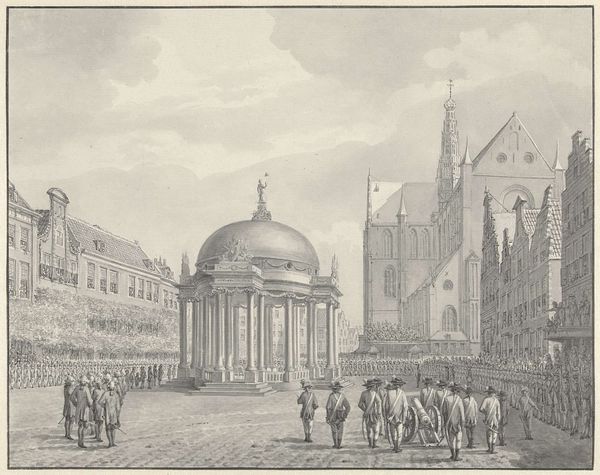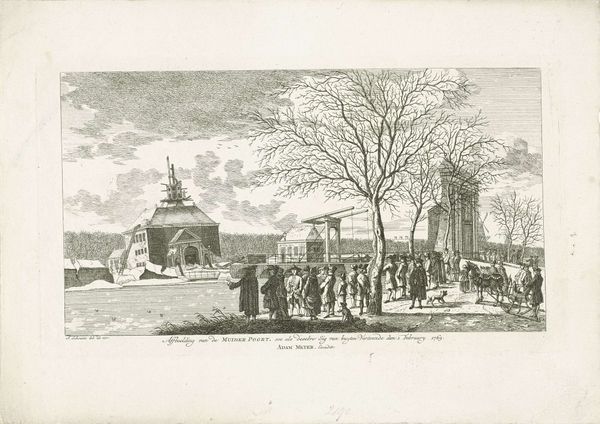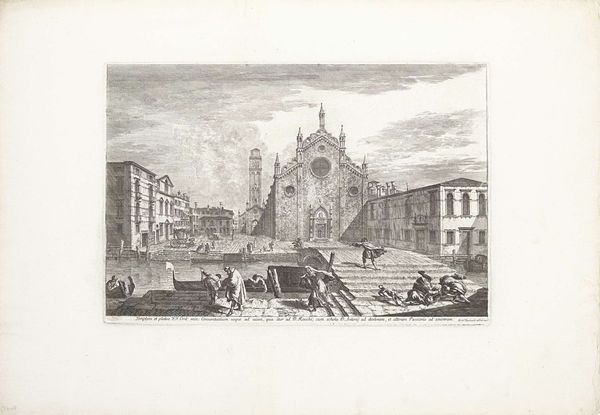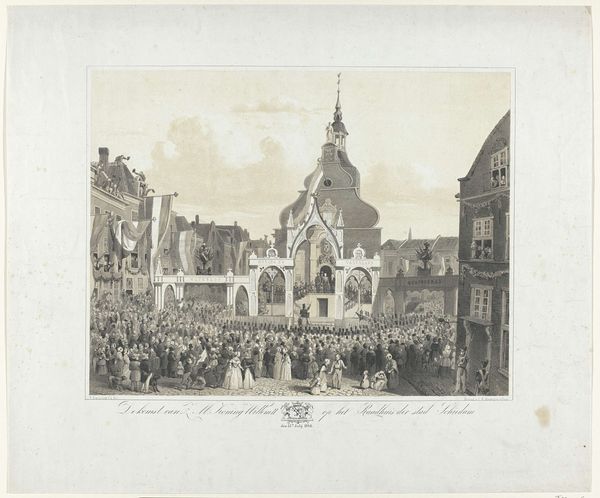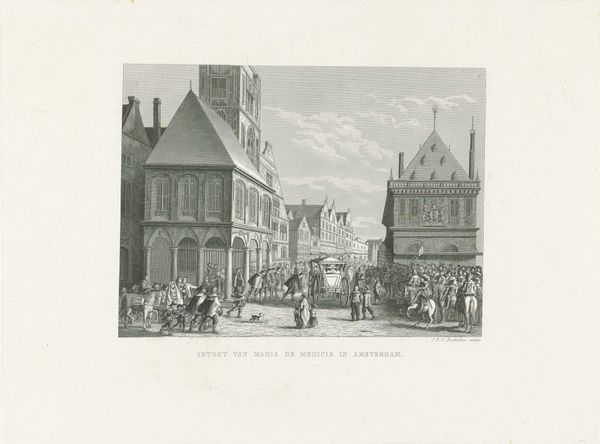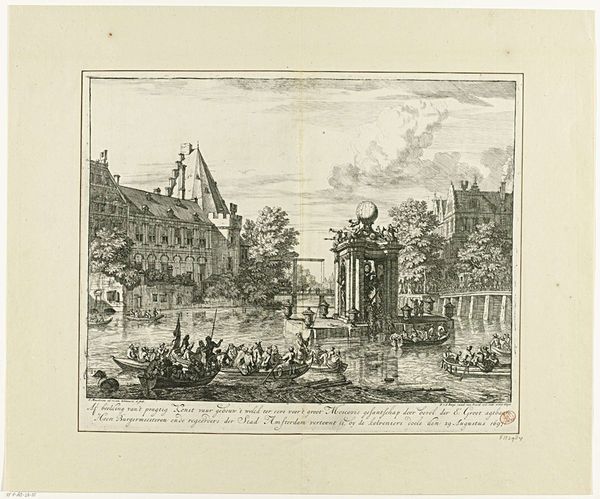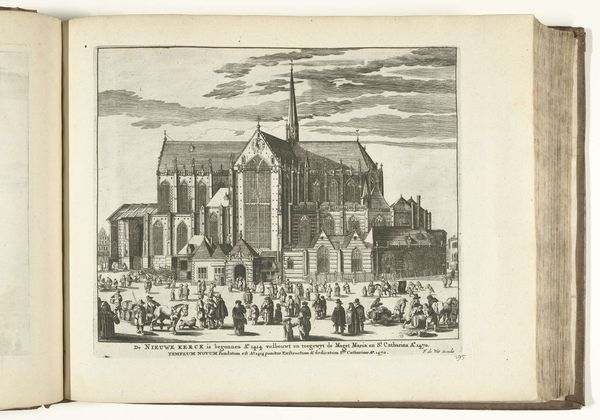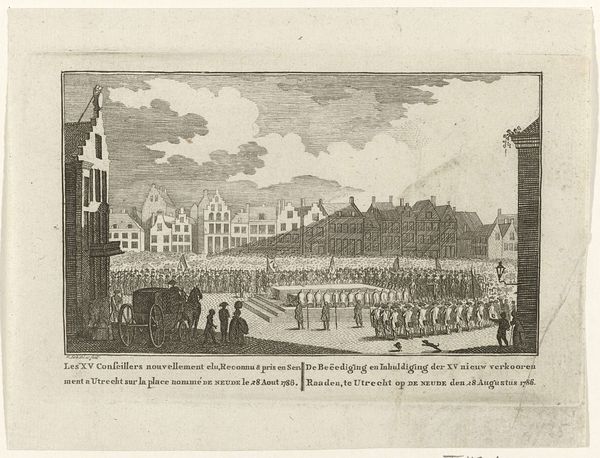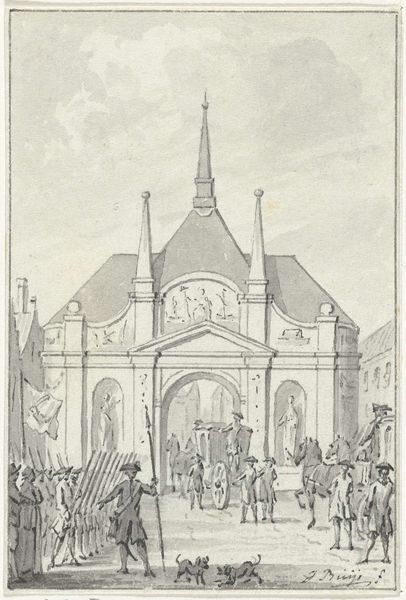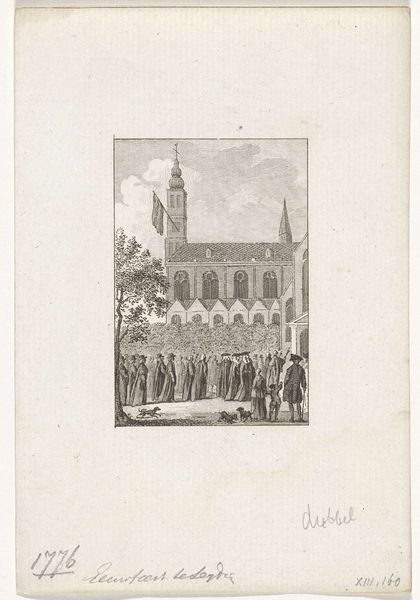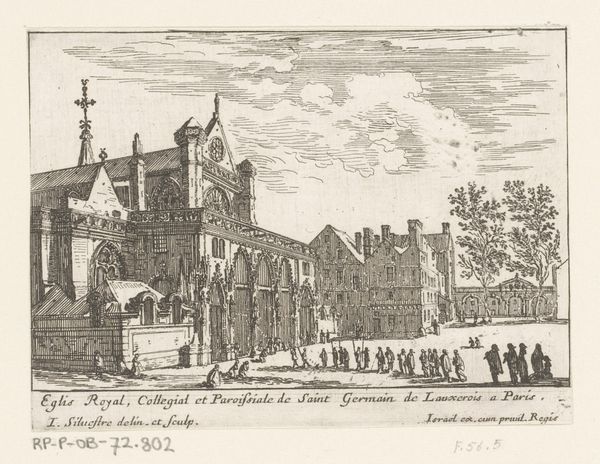
Dimensions: height 313 mm, width 410 mm
Copyright: Rijks Museum: Open Domain
Curator: This is "Beëdiging van het regeringsreglement in Haarlem, 1787," an etching by Izaak Jansz. de Wit. It depicts a significant historical event in the city of Haarlem. Editor: Wow, a proper record, this does feel… official. Looking at this piece, I can almost feel the weight of 18th-century bureaucracy bearing down on me. The intricate lines and detailed architecture almost create a sense of… overwhelming formality. Curator: Indeed. The image serves as a record of the official swearing-in ceremony, showcasing the solemnity and order of the event. The meticulous detail conveys the importance of governmental procedure at the time. Consider how prints such as these disseminated information and reinforced specific political narratives. Editor: Yes, I do like how De Wit used lines. There's almost a sort of... musicality in the way he shows all those characters within this sort of historical opera playing out in front of our eyes. I almost wonder whether he thought about all those marks in purely expressive terms? Curator: It's interesting you say that. As an engraver, De Wit's style reflected the broader conventions of baroque-influenced history painting but always mindful of how his work will engage an expanding public sphere. He presents this civic event in a style meant to convey authority. The choice to depict a historical moment of governmental change via an easily reproducible format hints at the emerging public role of art during a time of upheaval and revolution. Editor: It makes me wonder... What must it have felt like for the average citizen, staring at a copy of this etching hanging on their neighbor's wall or circulating in the newspapers? What's their immediate read? Because, for me, I want to know more. Was that a tense period for that country? It strikes me that they’d be taking away more than a celebration of ceremony or formality. Curator: Indeed. These were tumultuous times with much factionalism, so any rendering is political, even those claiming neutrality. Editor: True, true... Still, I cannot help thinking how radical is the very *act* of witnessing, and here we all are centuries later doing just that. It has made me rethink its legacy. Curator: Well, looking back we see that images always do more than what their immediate maker might anticipate. Editor: I'm glad to share these witnessing experiences with you.
Comments
No comments
Be the first to comment and join the conversation on the ultimate creative platform.
